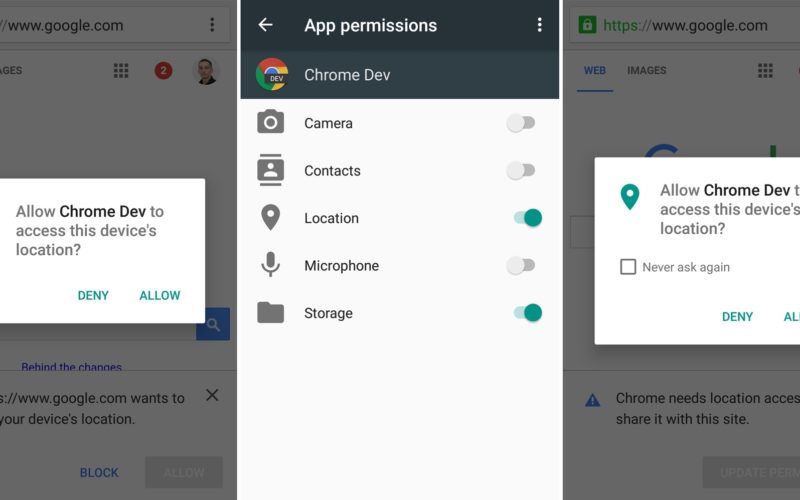You may be surprised to discover that the average app loses 80% of its users within the first three days. Most users download an app, open it once, and delete it. This happens because users trial a variety of apps, but decide which ones they want to keep/delete within the first precious moments post-install.
Is this behaviour a result of poor quality apps? The first interaction always plays a key role in building an impression, and if the first thing you see when opening an app for the first time is a barrage of pop-ups detailing permissions, you’re likely to be a little put off.
We’ve all experienced the following before:
This app would like to access your location
This app would like to access your camera
This app would like to access your contacts
These pop-ups can have a very negative impact on the user experience and usually lead to the app being sent packing. An app should build a rapport before asking for permissions, in order to retain engagement.
When the time does come to request permission, the worst thing an app can do is bombard users with requests without notice or explanation.
When you issue a request, you expect all users to accept. In order to achieve this, you need a strategy. The shape of your strategy will depend on the clarity and importance of the permission you are requesting. Critical permissions should be requested up-front, whilst secondary permissions may be requested further along the way.
The biggest factor that determines whether users accept or deny requests is when they occur. We recommend that you follow this simple rule: don’t ask for access until you really need it.
For many apps, failure to be granted access can dramatically alter the entire user experience.
If an app depends on SMS, declining access makes the app practically useless. Luckily, users expect a messaging app to request SMS-based permissions, so requesting it from the get-go makes sense.
Ultimately, apps should ask for permissions in context and communicate the value access will provide. Once you’ve managed to persuade the user to engage (which really is the hardest part), they will more than likely accept your request.
During development, you should look to clarify exactly why each permission request is needed, either through a feature or an explanation. Make it absolutely crystal clear for users what they’ll be getting in return for accepting.
Should you find you’ve been given the brush-off and your request has been denied, you should provide an explanation detailing the implications of their action.
If the app can no longer run because a critical permission has been denied, explain why that permission must be allowed and present a link to the device’s settings panel so the user can allow it if they change their mind.
Every app is different, but you should always think about when the user will need to permit access to different parts of their phone and data, and make it clear when you’re asking big questions. Improving the user experience is an iterative process, and if you fail to prepare, you should prepare to fail.


Comments are closed here.